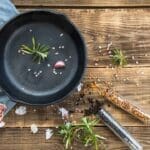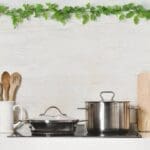Let’s take a look at seven surprising ingredients that could be in your pantry—and how to avoid them.
1. Natural Flavors
“Natural” sounds healthy, right? Unfortunately, “natural flavors” are a vague term that can include anything derived from natural sources—plant or animal. While this may sound harmless, these flavors are often heavily processed and can contain chemical additives to enhance taste. Always check the label and opt for products that clearly list real ingredients rather than ambiguous terms like “natural flavors.”
2. Locust Bean Gum
Found in many processed foods like ice creams and dairy-free alternatives, locust bean gum is a thickening agent made from the seeds of the carob tree. While it’s technically natural, it’s indigestible for humans, which can lead to bloating or digestive discomfort. This seemingly harmless additive could be affecting your gut health.
3. Polydextrose
Often found in “sugar-free” or “low-carb” snacks, polydextrose is a synthetic polymer of glucose. It’s used to replace sugar and add fiber, but it can cause digestive issues like gas, bloating, or even diarrhea for some people. If you’re prone to stomach discomfort, it’s worth checking if this hidden ingredient is sneaking into your diet.
4. Preservatives (BHA, BHT, Sodium Benzoate)
Preservatives like BHA (Butylated Hydroxyanisole), BHT (Butylated Hydroxytoluene), and sodium benzoate are added to extend the shelf life of foods, but they come with potential health risks. BHA and BHT are suspected to be endocrine disruptors and have been linked to cancer in some studies. Sodium benzoate, when combined with vitamin C, can form benzene, a known carcinogen. Opting for preservative-free foods can help reduce your exposure to these chemicals.
5. Polysorbate 80
Polysorbate 80 is an emulsifier used in processed foods like ice cream, salad dressings, and even in some supplements. While it helps blend ingredients, it’s also known to disrupt gut health by affecting the intestinal lining, potentially contributing to inflammation and leaky gut. Over time, this could lead to digestive issues and a weakened immune system.
6. Artificial Dyes
We often associate artificial dyes with candy and junk food, but they can be found in unexpected places like breakfast cereals, yogurts, and even body wash. Dyes like Red 40 and Yellow 5 have been linked to behavioral issues in children and potential carcinogenic effects. Choosing dye-free options or natural food colorings is a healthier alternative.
To help you get started, we’ve created a growing list of dye-free snacks on Amazon. Keep in mind, some of these snacks might still contain questionable ingredients, so it’s always a good idea to read the labels and make sure they meet your health standards. You can check out the list here.
7. Soy Lecithin
Soy lecithin is an emulsifier found in everything from chocolate to salad dressings. While it’s often considered safe, soy is one of the most common genetically modified crops and can contain residues from pesticides. Additionally, soy contains phytoestrogens—plant compounds that can mimic estrogen in the body, potentially disrupting hormone balance. For those with sensitivities to soy or concerns about hormonal health, this can lead to inflammation, allergic reactions, or other unwanted side effects.
How to Avoid These Ingredients
Staying informed about what’s in your food is the first step toward protecting your health. Reading ingredient labels carefully and opting for whole foods over processed items will help you avoid these hidden health saboteurs. If you need packaged foods, look for brands that are transparent about their ingredients and avoid the ones that include these problematic additives.

Making small changes, like swapping processed snacks for whole foods, can make a big difference in how you feel. Keep an eye on those pantry staples, and you’ll be on your way to a healthier, happier you!













